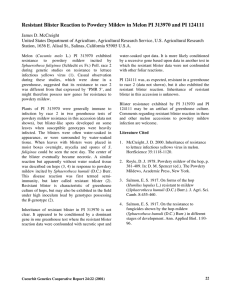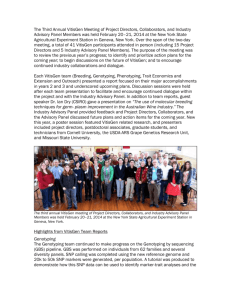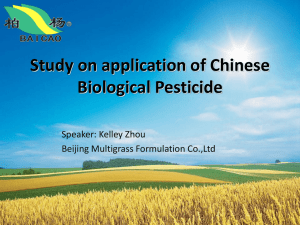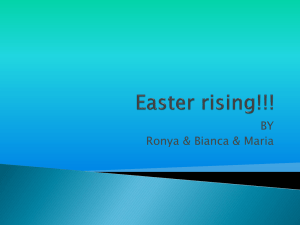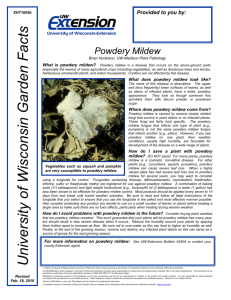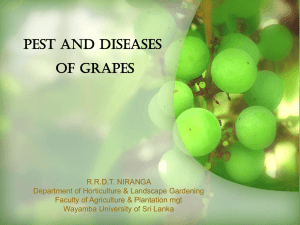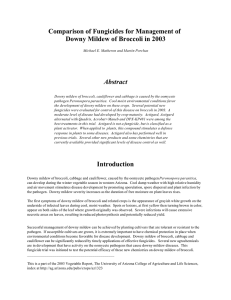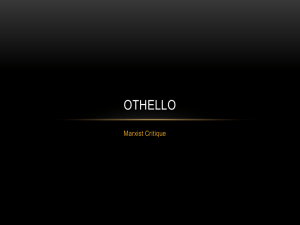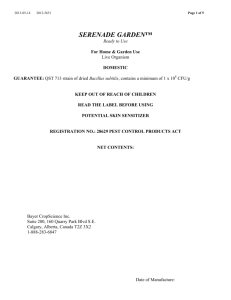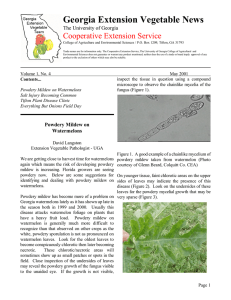Grapevine breeding for resistance to downy and powdery
advertisement
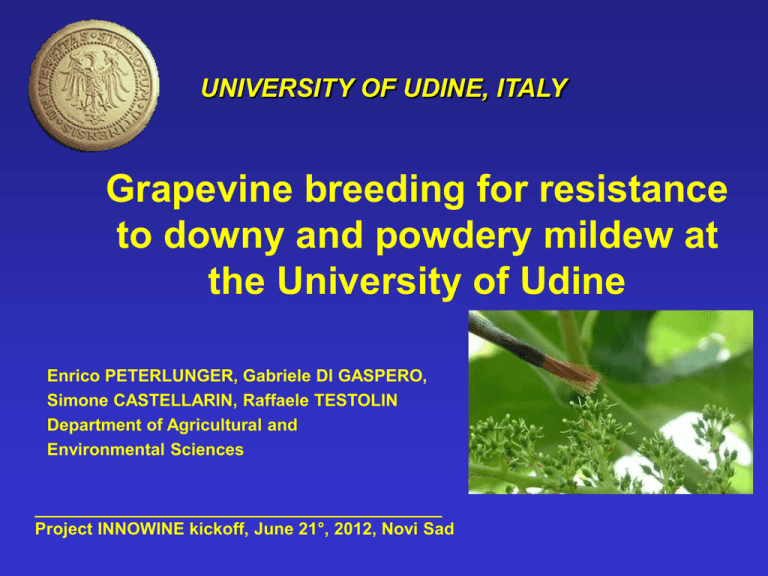
UNIVERSITY OF UDINE, ITALY Grapevine breeding for resistance to downy and powdery mildew at the University of Udine Enrico PETERLUNGER, Gabriele DI GASPERO, Simone CASTELLARIN, Raffaele TESTOLIN Department of Agricultural and Environmental Sciences ___________________________________________ Project INNOWINE kickoff, June 21°, 2012, Novi Sad Modern viticulture is depending strongly upon pesticides. Vineyards in Europe on 3.3% of total agricultural land but to preserve the grapes it is applied 65% of all fungicides used in agriculture, farmers damage for - man consumers - environment - economy of the crop Fungicide consumption in France Fungicides (France) 45000 40000 35000 30000 Tonnes de matières actives Cereales 25000 Grapevine 20000 Other crops 15000 10000 5000 0 1992 1993 1994 1995 1996 Years 1997 1998 1999 How did all this start? • Most cultivated grape varieties are > 200 years old • Minimum contribution from breeding • Limited variability, also reduced by clonal selection • Plants and their pathogens co-evolute in a continous struggle for life • one species not able of reproduction is destined to succumb • Man can help that species to survive but such a choice has a cost ........... A brief hystory from North America -Phylloxera 1878 -Powdery mildew 1845 -Downy mildew 1868 Phylloxera grafting onto resistant rootstocks breeding for resistant rootstock PM, DM breeding for resistant cultivars, hybrids such as Isabella, Noah, Clinton, Baco… but… Resistance was achieved Quality was not satisfactory About 1960 Europe decided to ban hybrids except… eventual new selections “comparable” to vinifera Sources of resistance to diseases • 30 American species (V. riparia, V. rupestris, Muscadinia ) • 30 Asian species (V. amurensis, …) • monogenic (non-host, HR) • poligenic origin of sources of resistance Powdery mildew (ren1) Kishmish vatkana Downy mildew Powdery mildew Downy mildew Powdery mildew? the breeding lines susceptible (S) Chardonnay Cabernet S. Merlot Sauvignon Sangiovese Tocai ... resistant (R) Bianca 20/3 Regent Seyval Pannonia SK-00-1/2 ... Demasculation and controlled pollination The workplan • • • • 800+ accessions introduced into the repository 270 + cross combinations 16.000+ seedlings under evaluation Selection for - resistance - agronomical features - quality of musts advanced evaluation • nano-vinification of > 200 selections at UIV (VR) • wine testing for up to three years • advanced evaluation for 15 selections at VCR in Fossalon [2010] several advanced selections Vc 80.024 tocai x bianca Vc 58.083 cab s x bianca Vc 55.084 sauv x bianca Vc 32.078 cab s x 20/3 Vc 80.111 tocai x bianca Vc 34.004 tocai x 20/3 Vc 31.125 Vc 31.122 merlot x 20/3 merlot x 20/3 Vc 80.100 tocai x bianca Vc 57.001 merlot x bianca Vc 55.100 sauv x bianca Future development of the breeding program to combine together more than one resistence • combining resistences to different pathogens • combining more resistences to the same pathogen • 2 sources of resistance to downy and 2 to powdery mildew to differentiate the product • sparkling base • long-lasting wines • dessert wines • table grape • ... The new frontiers of selection: the marker-assisted selection - Genome sequencing - No GMO - The selection is not carried out on phenotypic characters but on genes controlling them (e.g. resistance) X GTACGG GTACGG GTACGT GTACGG GTACGT GTACGT GTACGG GTACGG GTACGT GTACGG The new frontiers of selection: the selection for the aromatic profiles 7 TOF MS EI+ TIC 2.00e5 3562_16 16.25 33.65 30.81 % bianca 14.07 19.25 34.06 13.56 20.15 2 12.00 3562_14 14.00 16.00 18.00 20.00 21.11 22.38 45.83 33.11 24.93 24.00 22.00 38.82 29.48 24.36 27.79 26.00 28.00 36.31 30.00 32.00 34.00 36.00 37.85 38.00 39.47 40.00 42.00 44.00 46.00 TOF MS EI+ TIC 2.78e5 16.26 chardonnay % 30.81 33.65 14.07 24.93 19.25 13.57 1 12.00 20.07 23.80 24.36 29.48 25.15 22.38 34.06 33.11 27.79 37.42 38.82 39.47 45.82 Time 14.00 16.00 18.00 20.00 22.00 24.00 26.00 28.00 30.00 32.00 34.00 36.00 38.00 40.00 42.00 44.00 46.00 - The impact of traditional viticulture needs to be considered - A more healthy viticulture with lower production cost can be done, without forgetting tradition - The value of our products is the territory, with our tradition and skills - A resistant cultivar can help future viticulture to be more sustainable Research conducted in cooperation with IGA- INSTITUTE OF APPLIED GENOMICS - Udine and • Institute of Viticulture, Pécs, Hungary • Missouri State University, USA • INRA, Colmar, France • Université de Strasbourg, France • Genoscope, Paris, France • Institut für Rebenzüchtung, Geilweilerhof, Germany • University of Geisenheim, Germany • Unione Italiana Vini, Verona, Italy • University of Verona, Italy • CRA Istituto di Viticoltura, Conegliano, Italy Support from • Region Friuli Venezia Giulia • MiPAF Projects Vigna & Vigneto • MiUR strategic projects PRIN • Vivai Cooperativi di Rauscedo • Banche di Credito Cooperativo of FVG • CR of Udine, Gorizia, Trieste • Consorzio Collio • Winemakers Felluga L, Felluga M, Zamò, Venica Thanks for your attention!


